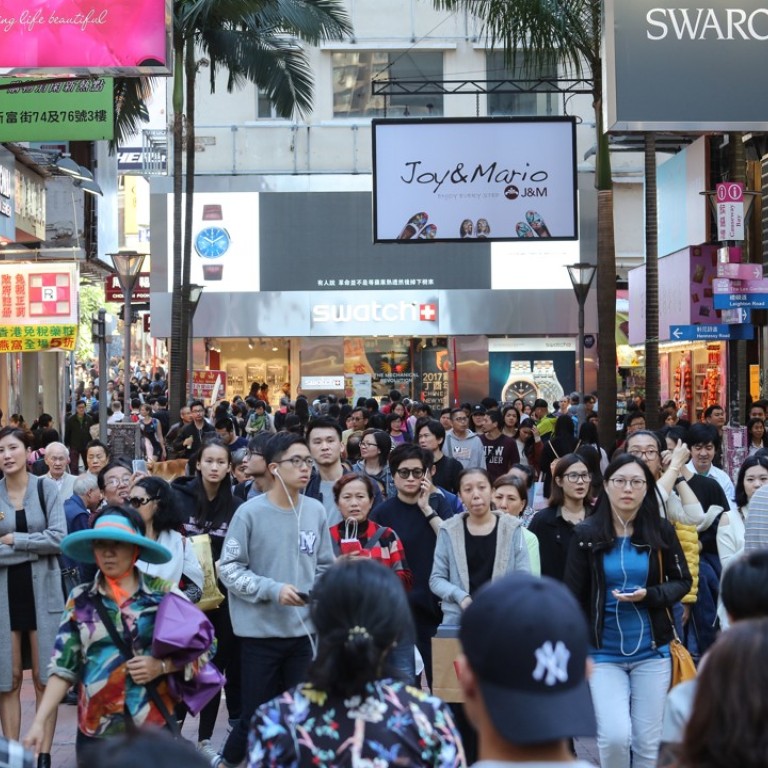
Hong Kong retailers filling up empty shops, sending vacancy rates in tourist areas to 3-year low as landlords cut rents
Mannings grabbed lease in Tsim Sha Tsui for 72 per cent less than the former tenant paid after space gathered dust for 20 months
Hong Kong is missing something lately: empty retail shops.
Retail sales are up. So is tourism. And landlords are settling for lower rents for street-level shops – at least one was dropped by more than 70 per cent.
The combination has sent vacancy rates of street-level shops down to 5.6 per cent – a three-year low – in four popular tourist areas, said Tony Lo, a director at Midland IC &I. The areas are Causeway Bay, Tsim Sha Tsui, Central and Mong Kok. Of 7,288 street-level shops there, only 408 were recorded as empty.
“Even those landlords with strong holding power are now willing to cut rents after leaving their spaces empty for a year or two,” Lo said. “They bought their retail properties more than a decade ago and have already paid off their mortgages. They are the last ones to offer rent reductions.”
One of the most notable examples is Mannings, the local health and beauty chain. In May, it leased a 2,516-square-foot shop on Canton Road in Tsim Sha Tsui for HK$1.25 million (US$160,000) a month. That is 72 per cent cheaper than the rent paid by the former tenant, Chow Tai Fook Jewellery. When the jewellery seller moved out, the space was empty for 20 months.
Meanwhile, in Wan Chai in August, the landlord of a shop vacant for nearly a year reduced the rent by 20 per cent a month, or a monthly savings for the shopkeeper of HK$40,000 (US$5,100).
“Shops can be rented out within a couple weeks after being vacant for a year or two since the retail in the city turned soured,” said CEO Daniel Wong Hon Shing of Midland IC&I Group, a local agent with focus of industrial, commercial and shops.
In general, rents have been reduced between 20 per cent to 30 per cent compared with 2013, Wong said.
Business sentiment has been on the upswing this year.
More tourists are helping boost sales for street-level retailers in tourist hot spots, property analysts note. Tourist arrivals to Hong Kong increased 9.4 per cent to 36.06 million in the first seven months of this year, from the same period in 2017.
To be sure, there are signs retailers are feeling a bit of a pinch from the US-China trade war and the weaker yuan. But overall, retail sales have picked up this year.
“Shop owners saw their rents soar during the peak of the city’s retail in 2013, and they thought if one luxury store moved out, another will come. However, after they waited for years, they found the situation is not like what they expected,” said Helen Mak, senior director and head of retail services at Knight Frank consultancy.
“To attract new tenants, who do not have the [money] of luxury stores, landlords have to lower their rent,” Mak said.
Average monthly rent per square foot on Russell Street, once the most expensive retail street in the city, is now about HK$2,000, down from about HK$3,000 at the peak about 5 years ago, agency data show.
“In the past, three out of four shops were Rolex on Russell Street, and you couldn’t even find a place to buy water. Now we see a mix. Probably one Rolex, one fish ball noodle restaurant, one 7-11 and a fashion retailer,” Mak said. “The shopping landscape is more balanced.”
A quarter of shops in the four core districts are now food and beverage stores while fashion retailers account for 13 per cent, and jewellery and watch sellers are about 5 per cent, data from Midland show.

